Music is the universal language
“Glory to God in the highest heaven, and on earth peace to those on whom his favor rests.” - Luke 2:14
Norse Guitar Feeds
Asheville Music Tools Analoger APH-12 Review
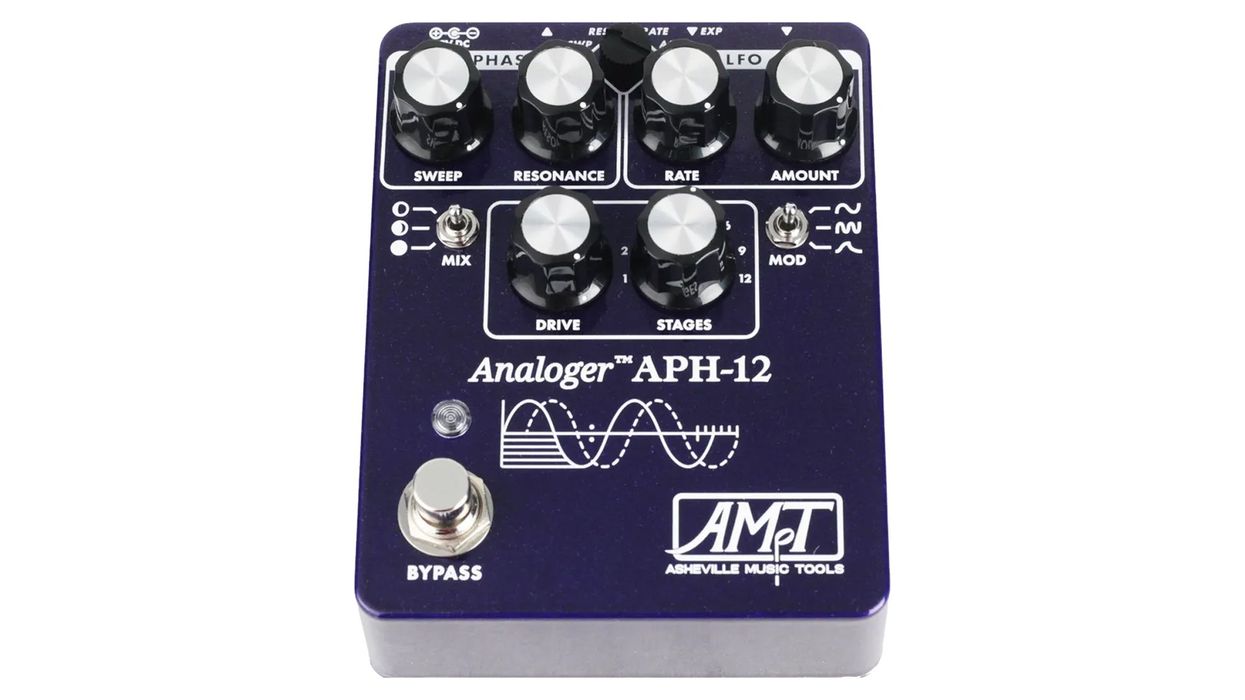
At the end of the very thorough—and essential—manual that accompanies the Asheville Music Tools APH-12 phaser, designer Rick “Hawker” Shaich sweetly dedicates the pedal to the memory of the Grateful Dead’s bassist Phil Lesh. In fact, there are several references to the Dead in the manual—most pertaining to the APH-12’s ability to mimic Jerry Garcia’s envelope filter tones. But it is probably Lesh, the Dead’s relentless experimentalist, that would have appreciated the impressive, immersive APH-12 the most. Because while the all-analog APH-12 excels in rich conventional phaser sounds, it is capable of radical filtering and EQ effects, vibrato, tremolo, ring modulation, and more that would have been right at home on 1968’s Anthem of the Sun, the Dead’s mad-scientist production apotheosis. But you certainly don’t need to be a Deadhead to appreciate the sounds and craft that distinguish the APH-12. If you dig peppering your own productions and compositions with distinctive, weird, arresting textures—or just buttercream-thick phaser sounds—the APH-12 is a feast of treats that can transform a tune.
12 Stages, Infinite Roads
The fact that Hawker once worked as an engineer for Moog is a less-than-well-kept secret. And it’s impossible to not be excited about the APH-12 in the context of the Moogerfooger MF-103 phaser, a Bob Moog modulation masterpiece that Hawker helped refine during his tenure. With its 12-stage capability, drive control, and LFO section, many aspects of the APH-12’s features and functionality mirror those of the MF-103. But the APH-12 has a very different architecture. Where the MF-103 featured just 6- and 12-stage phase effects, the APH-12 is capable of 2- and 4-stage phasing as well as single-stage and odd-numbered staging that yield unusual, colorful out-of-phase effects. It also features an envelope-controlled mode that enables dynamic command of the modulation.
Learning how all these functions work together takes time. Though Hawker initially conceived the APH-12 as the company’s first analog/digital hybrid pedal, his ears led him back to an all-analog design. That means you can’t rely on presets to capture sounds derived from sensitive and interactive controls. You have to pay attention and probably take notes. But the process of decoding the APH-12’s secrets is instructive, engaging, immersive, and intuitive in its way, and learning its language is addictive stuff that often yields musical gold.
You Can Always Go Home
Though it’s easy to get into very strange places with the APH-12, getting back to a safe space is as simple as selecting the 1-, 2-, 4-, or 6-stage phasers and backing off the phase amount, LFO resonance, and sweep controls. The latter, which adjusts the center frequency for the modulations, effectively works like a tone control, taming and enhancing peaks that can make a phase cycle super intense or subtly woven through the fabric of a musical phrase. It’s not only easy to return to these more modest phase effects if you get lost in the weeds, but they are deeply satisfying and, in terms of depth and character, rival or better my own favorite phasers. This capacity for thick, rubbery versions of classic 4- and 6-stage phase controls is enough to make a case for replacing every phaser in your collection with the APH-12. But it’s the pedal’s ability to deliver the unexpected that makes the hefty near-$400 price tag a value.
The odd-numbered stages, for example, are as impressive for their filtering effects as modulation. In the single-stage mode, the modulations can double as tremolo pulse, but the frequency cancellations lend a dirty ’60s attitude to guitar lines that would serve one of Sergio Leone’s grittiest spaghetti Western scenes. The 3-stage setting is home to some of my favorite colors in the APH-12. It can sound nearly as chewy as the 4-stage setting, but has a funky, vowel-ly attack that bridges the gap between Funkadelic and Pink Floyd and, for its narrower tone emphasis, sounds more focused in a multi-instrument mix.
“This capacity for thick, rubbery versions of classic 4- and 6-stage phase controls is enough to make a case for replacing every phaser in your collection.”
The 5-stage mode, like the 3-stage setting, is home to some of the most Garcia-like tones, especially when used with the dynamic envelope setting on the modulation switch. But in 5-stage mode you also start to hear more pronounced variations on the APH-12 and the most mold-breaking tones. Here you’ll find modulations that are both elastic and vocal but also effectively lo-fi in a distant radio broadcast kind of way. This tendency is beautifully enhanced in 9-stage mode, and you’re likely to find a lot of sound designers lurking here, crafting dark submarine resonances and the atmosphere of chains clanking in an empty, hulking space freighter.
The odd-number modes aren’t all, well, odd. Slow-motion phase cycles with a heap of drive (which uses a JFET saturation stage to enhance even-order harmonics) can produce dreamy filter sweeps that are super-dramatic without being sprawling and bossy. The APH-12’s 12-stage mode is another place where sound designers and players seeking simple but pronounced coloration will co-exist. Here again, the APH-12 excels at shaping intense modulations that can be slotted surgically in a mix. But I was also able to construct tone environments equally well suited for a David Lynch-led field trip to trans-dimensional realms populated by metallic seagulls, distant throbbing motors, and fragments of fractured interstellar communications.The Verdict
The sounds highlighted here are a fraction of what the APH-12 can do. And while there are significant differences under the hood, anyone who has been thwarted in the secondhand Moog MF-103 market will find much to sate their hunger here. But outside any comparisons to a discontinued classic, the North Carolina-built APH-12 is an outstanding modulation, filtering, and noise machine that can bring the weirdness and the ruckus one second and slide back into slippery, sonorous, rich, and gliding phase tones in the next. It’s an expensive pedal, but you could replace multiple phasers and noisemakers sitting in your closet with this and never miss them—unless you get a hankering for your Phase 90’s one-knob, no-brainer simplicity. Factor in the considerable R&D and the many years of engineering experience behind the execution of this fine modulator and that $397 price tag starts to look like a very fair price—and a smart investment—indeed.
Legendary Punk Band Propagandhi’s Fight to Be At Peace
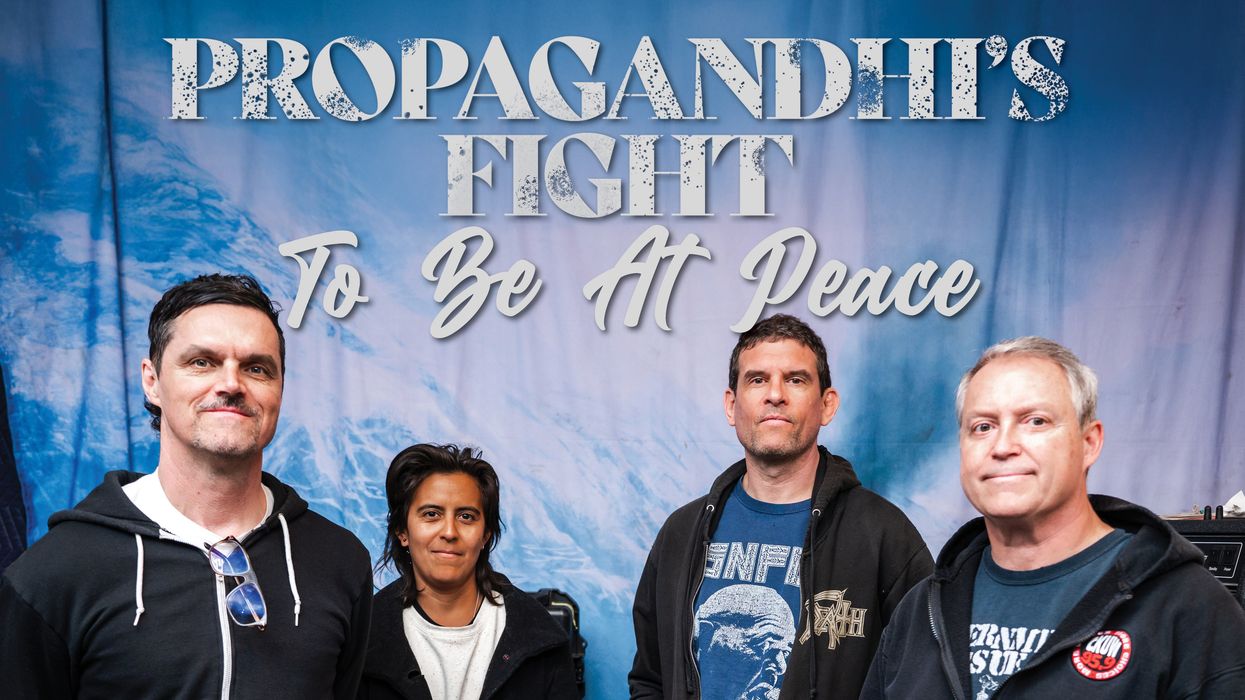
Winnipeg band Propagandhi’s new record was fully written when bassist Todd Kowalski showed up to a rehearsal with a rough, weird demo of a slow, lurching metal song. Vocalist and guitarist Chris Hannah, who splits principal songwriting duties with Kowalski, was pissed. “I’m like, ‘For fuck’s sake man, at the eleventh hour? Are you serious? Another song and one where I have to learn a new guitar technique? Whatever.’” The band—Kowalski, Hannah, drummer Jord Samolesky, and guitarist Sulynn Hago—began playing the song, which is now called “Guiding Lights,” and within a short time, Hannah realized that they’d just found the opening track for their new album. “You never know how something’s gonna unfold,” he says, “and you have to remain open to changes as the writing goes along.”
At Peace is Propagandhi’s eighth full-length, and their first in eight years, after 2017’s Victory Lap. It features some of their more experimental compositions, like the aforementioned opener, and the prog-metal ballad “Stargazing,” which is one of the gentlest songs in Propagandhi’s almost 40 years together. There’s the slowed-down hard rock of “No Longer Young,” and the sort of late-career downtempo metal of “Benito’s Earlier Work” and “Day By Day.” There are doses of skate-punk, thrash, and melodic hardcore here, too, but At Peace certainly marks a new speed for Propagandhi.
“We almost pushed ourselves in the opposite direction that we usually push ourselves,” says Hannah. “We’re usually looking for ‘frantic and dense, out of control.’ This record, we thought, ‘We’re going to push ourselves in the opposite direction, out of our comfort zone, into under-control, lots of space, room for things to bloom.’ For us, that meant slowing down.”
“I was working on just being able to play simple, mechanical things at much slower speeds. I realized when I did it for a long time, and I got okay at it, when I sped it up, it was so much better.”The tempos of some of the songs on At Peace were uncomfortably slow. For decades, Propagandhi has been a band that either plays fast or really fast, and Hannah simply didn’t know how to play riffs at much less than breakneck speed. Judas Priest’s 2018 record Firepower was an energetic inspiration for the new approach. “There’s an essence to that record that I think we were all hoping to evoke in writing these songs,” says Hannah. “It’s not an aesthetic thing, like we don’t have any of the ornamentation or performance capabilities of the guys in Judas Priest, but we wanted to honor something that we heard in that record, and I think that drove us to dial things back a bit and open it up. It harkens back to the music we first were inspired by in the ’80s, like the thrash-metal scene. The sense that you are being vaulted into outer space by the performance of the band was really important to us, but those bands also were able to control things.”
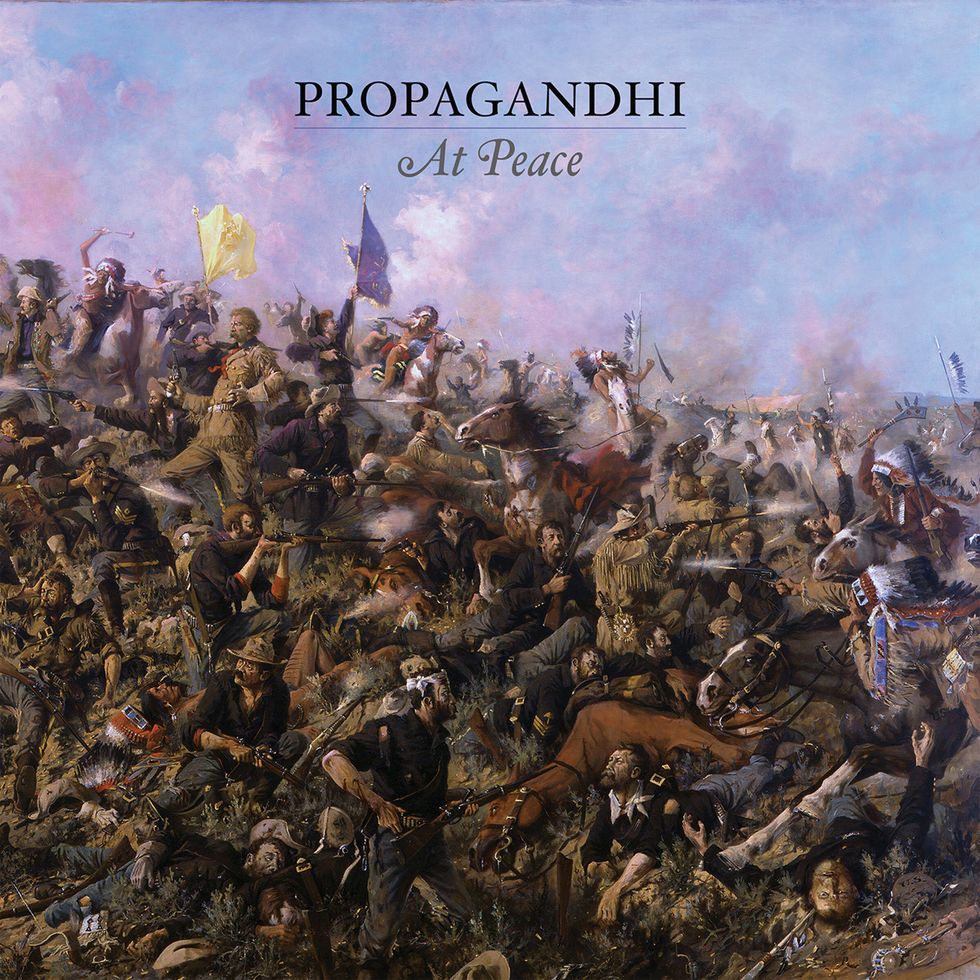
The downshift was especially difficult for Hannah. He never had a guitar teacher growing up, so he’s always figured things out for himself. That means that now, in his 50s, he’s still trying to correct “bad” techniques that he’s developed over the years. One of them is playing too fast. When Hannah comes up with a high-velocity riff now, he sets a metronome and tries to play it at half speed. The point is to determine if the phrasing is still intelligible; if it’s not, he’s not playing it right when it’s at full speed, either. “I was working on just being able to play simple, mechanical things at much slower speeds,” he says. “I realized when I did it for a long time, and I got okay at it, when I sped it up, it was so much better. In the course of doing that, sometimes you discover the slower speed is actually better. The stuff you’re trying to do gets more of a chance to be heard instead of just blowing by everybody.”
Another key part of Hannah’s style has been to hide his playing behind high-gain signals; during the making of At Peace, he was determined to break that pattern. Inspired by lower-gain metal records like Nuclear Assault’s Game Over and Hallows Eve’s Monument, Hannah dialed in less distortion, aiming to play his parts with as little gain as possible on his EverTune bridge-equipped Gibson SG, running into a Friedman BE-100 head. The Friedman’s sheer power helped maintain a feeling of chaos, but so did a custom guitar built by Winnipeg’s Allan Beardsell, which didn’t have an EverTune bridge—Hannah’s request. “EverTune made an amazing invention, and nine times out of 10 that’s what I want to play, but you have to give up something for that, and you give up just a touch of chaos and variability,” says Hannah.
Chris Hannah’s Gear
Guitars
1997 Gibson SG with EverTune bridge, Bare Knuckle Pickups Nailbomb in the bridge, and Seymour Duncan JB in the neck
Allen Beardsell-built custom electric
Amps
Marshall JCM2000 DSL 50-watt head (live)
Friedman BE-100 (2015 revision; studio)
’90s Mesa/Boogie Rectifier angled 4x12 (de-tolexed) with two Celestion V30s on the bottom and two Celestion G12M Greenbacks on the top
Effects
Fractal VP4
Strings & Picks
Jim Dunlop Flow Gloss 2 mm and 3 mm picks
Any string brand (.010-.046 or .010-.052)
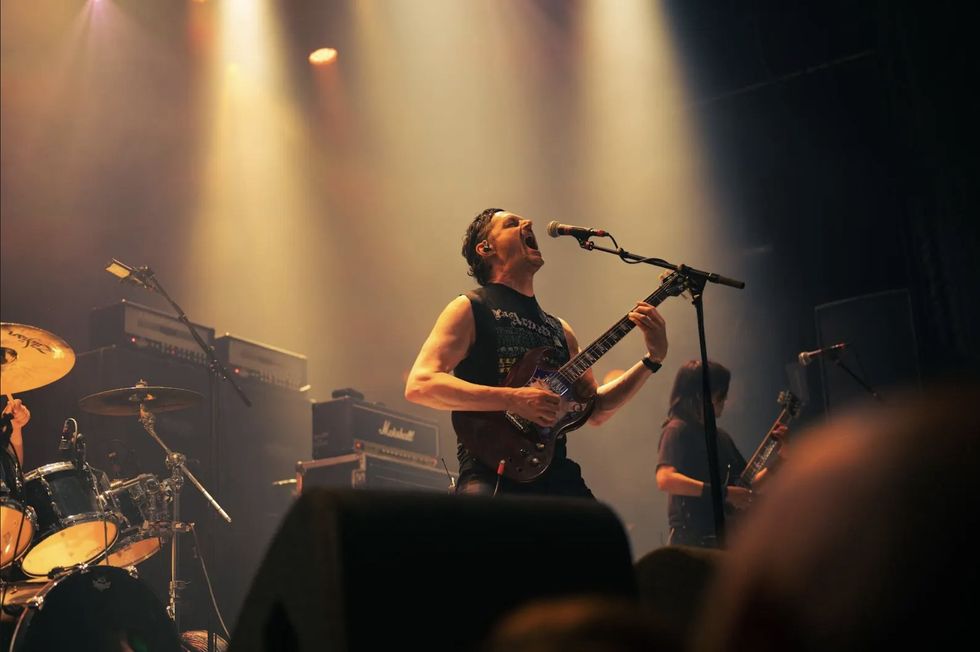
Writing and recording these songs, says Hannah, “the best part of being in a band is being in the practice space. Everything outside the practice space door is almost universally bullshit. I don’t like touring, I don’t like playing live, I don’t like any of it. I like being in the practice space, because there’s where you are literally playing, you know, exploring.”
The title At Peace, says Hannah, is paradoxical. “It’s earnest, but it’s also sardonic,” he explains. “There has to be some meaningful aspect to our time on earth. I keep bringing up this old adage: ‘Accept what you can’t change, and change what you can’t accept.’ But in this era, there are some things that we cannot accept that we also cannot seem to change at this point. The trajectory and the momentum behind the insanity is very daunting and frightening. So what do you do? Sure, I could read Eckhart Tolle’s The Power of Now and develop a mindset where I accept what is happening. But can I live with myself? I find life under this particular system of organization to be a constant state of humiliation. How do I find meaning within that? As somebody who has kids, how do I face my kids to not seem like I’ve just lived the life of a coward the whole time in the face of all this?”
“This record, we thought, ‘We’re going to push ourselves in the opposite direction, out of our comfort zone.’ For us, that meant slowing down.”
The title song itself is a series of explorations of darkness, and meditations of a sort on trying to resolve our world’s exhausting contradictions. The last line is lifted from the Canadian songwriter Bruce Cockburn’s “Lovers in a Dangerous Time”: “Nothing worth having comes without some kind of fight/Got to kick at the darkness ’til it bleeds daylight.” Here, Hannah belts the final word over the furious clang of the main guitar riff.
The track and the record arrive at a time when it feels as though a new threshold for global-scale madness and cruelty is reached each week, and Propagandhi’s music still functions as a flaying of this international order. (“This is the one place where I can tell the world what I really think of it,” says Hannah.) But there’s a resignation to At Peace, too—a feeling of acceptance that we’re on a sinking ship. Hannah’s just not sure where we go from here. “You can see I don’t really have an answer, but that’s kind of the point of the song, and maybe even the title of the record,” says Hannah. “I don’t know what the answer is in this insane world anymore.”
YouTube
The brutal, moving animated video for At Peace’s title track illustrates the mindset of the always-political Propagandhi in 2025.
“They labelled us as teenage jailbait or punk rock. Just give me my guitar. I just wanted to play”: Lita Ford reflects on The Runaways and why people didn't know what to make of the pioneering band
Ozzy Osbourne’s guitarists through the years: the players who served the Prince of Darkness for his classic albums and tours, in pictures
“For the Prince of Darkness, he sure gave us a lot of light”: Tobias Forge pays tribute to Ozzy Osbourne at Ghost’s sold-out Madison Square Garden show

Yesterday, Ozzy Osbourne sadly passed away, just weeks after putting on the show of a lifetime and raising nearly $200 million through Black Sabbath’s grand farewell gig. As the metal world mourns this monumental loss, artists are honouring the Prince of Darkness’s career, with Ghost even dedicating last night’s Madison Square Garden show to Ozzy.
Before performing The Future Is A Foreign Land, frontman Tobias Forge addressed the sold-out crowd. “We’re going to dedicate tonight’s show to the memory of the life and laughter of Ozzy Osbourne,” he said [via NME]. “For being the Prince of Darkness, he sure gave us a lot of light, so we’re gonna tap into that tonight and carry it forward through a time of darkness.”
In a since-deleted Instagram post, the Swedish metal band shared the clip, re-iterating the fact that the evening was entirely dedicated to Ozzy. “We wish to inform you that Ghost dedicated their sold out New York ritual at Madison Square Garden to the Prince Of Darkness himself: Ozzy Osbourne,” the caption read.
While Ghost were unable to play Black Sabbath’s final show on 5 July, frontman Forge dropped everything to jet overseas on his own, performing solo at Ozzy’s groundbreaking Back To The Beginning farewell concert. Appearing as his Ghost persona, Papa V Perpetua, Forge was part of the ever-shifting roster, temporarily fronting the Ozzy/Sabbath supergroup to cover Ozzy’s 1983 solo track, Bark At The Moon.
Back in March, Forge told NME that Ozzy’s work has always been a major inspiration. “Ozzy as a frontman and Ozzy as a solo artist is something I put a divide between, because I grew up in the ‘80s where he was much more of a rockstar than Black Sabbath were,” he explained. “I gravitated towards that, but I also grew up listening to the old Black Sabbath records.”
“Nowadays, I love most Black Sabbath releases… Vol. 4, Sabbath Bloody Sabbath and Sabotage have been absolute milestones for me for as long as I’ve been writing music. They’ve been very influential, even though it might not be super evident. I’ve always listened to them, and I’ve always been inspired by them.”
News of Ozzy’s passing was shared yesterday (22 July) by his family. “It is with more sadness than mere words can convey that we have to report that our beloved Ozzy Osbourne has passed away this morning,” an Instagram post said. “He was with his family and surrounded by love.”
The post “For the Prince of Darkness, he sure gave us a lot of light”: Tobias Forge pays tribute to Ozzy Osbourne at Ghost’s sold-out Madison Square Garden show appeared first on Guitar.com | All Things Guitar.
DiMarzio Introduces Muscle T Pickups for Telecasters and Super PAF Ceramic
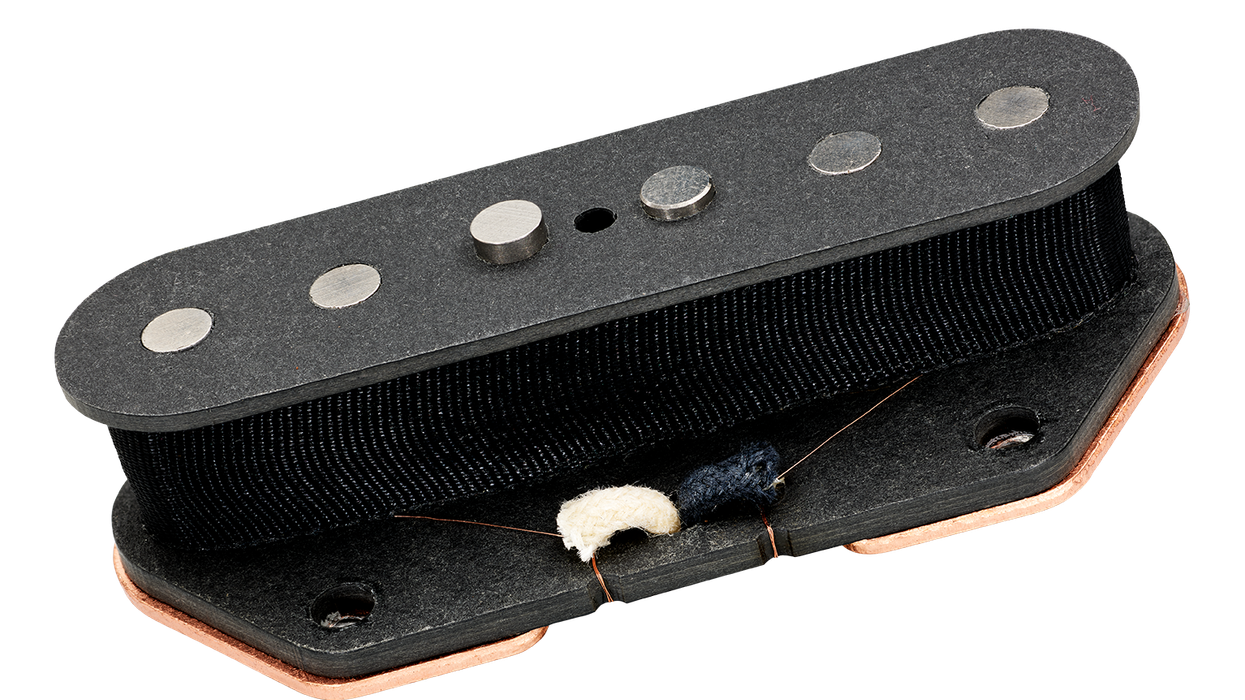
Adding to the company’s broad ranging product line, DiMarzio has introduced three new models this summer: a pair of brand new pickups for beefing up your Tele-style guitar, and a new configuration of the legendary Super Distortion humbucker.
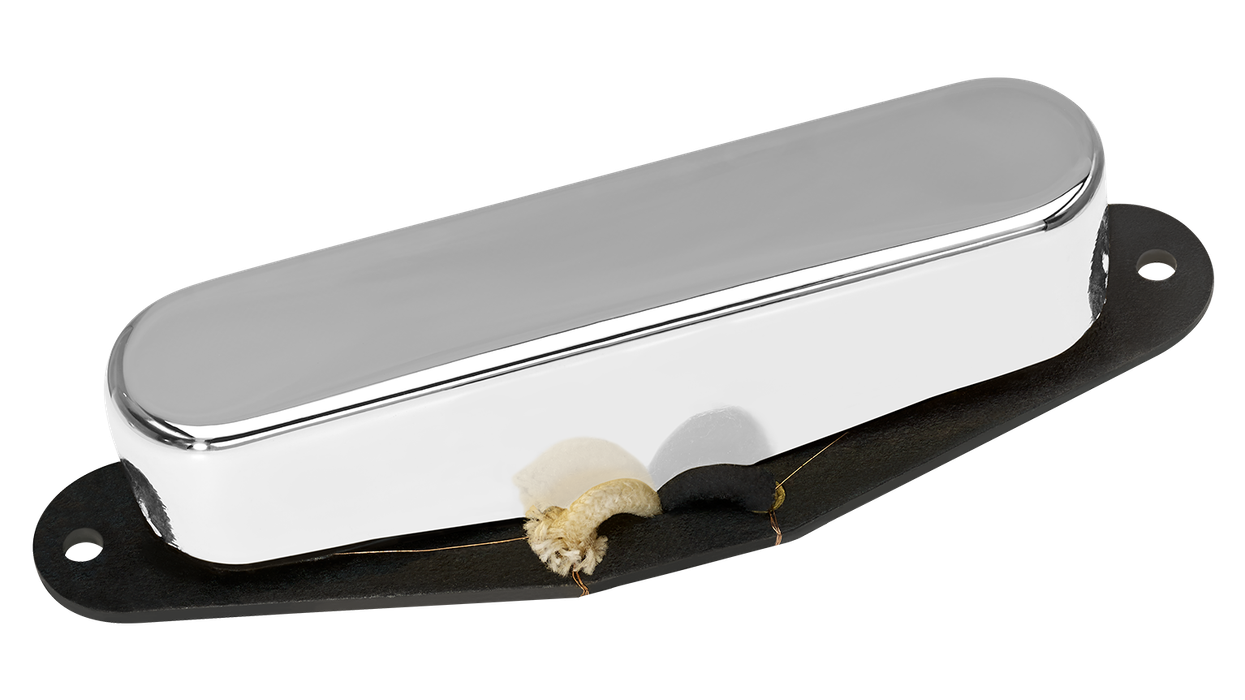
The DP436 Muscle T Neck retains all the dynamic response of a good early sixties Tele® pickup but adds more of the glassy sparkle that guitarists crave. The Muscle T™ Neck has been carefully calibrated with extra volume and presence to keep up with the needs of today’s players, and the overall musical character delivers a better string-to-string balance for rhythms that cut and precise soloing.
Both models are drop-in replacements for standard Telecaster pickups and offer traditional 2-conductor wiring.
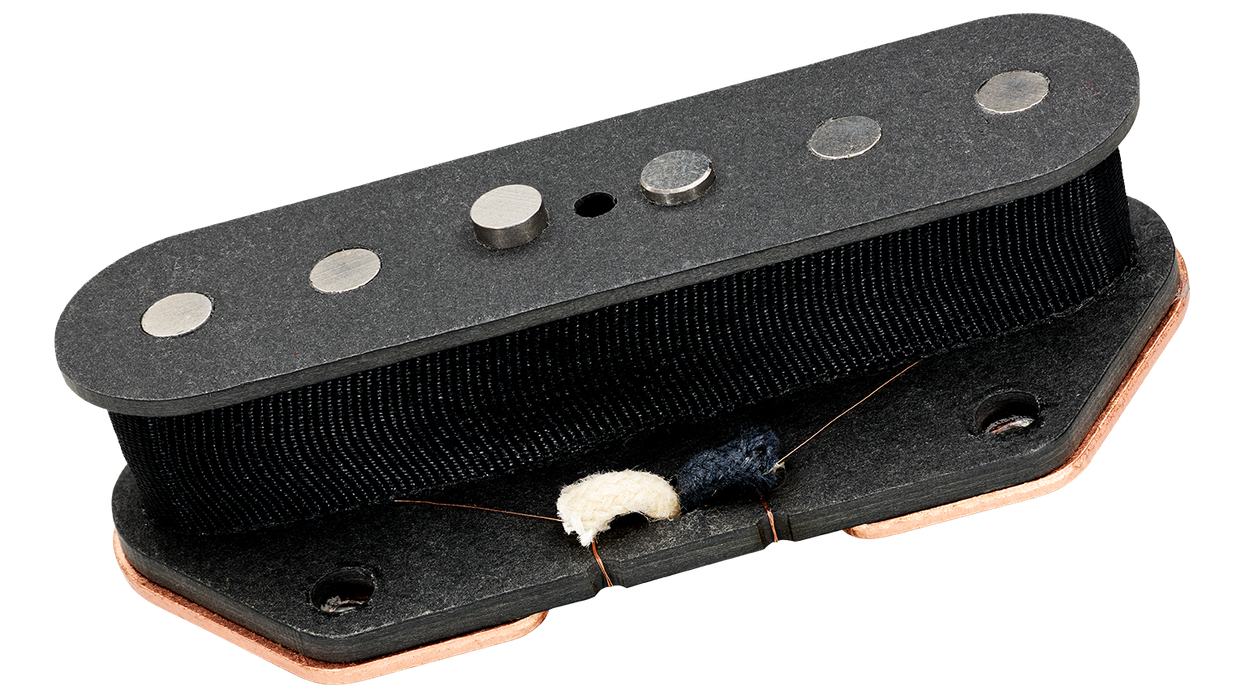
The DP437 Muscle T™ Bridge and DP436 Muscle T™ Neck pickups capture the best attributes of classic 1960s vintage Telecaster pickups with a dash of added output.
The DP437 Muscle T Bridge utilizes a traditional magnet stagger inspired by early ‘60s Tele® pickups, but DiMarzio has kicked the output up a notch to get more sustain and added warmth to the top end to eliminate the harshness. The balanced lows, mid-range snarl and clear top end make the Muscle T™ perfect for any player that wants legendary single coil Tele® tone with a modern touch.
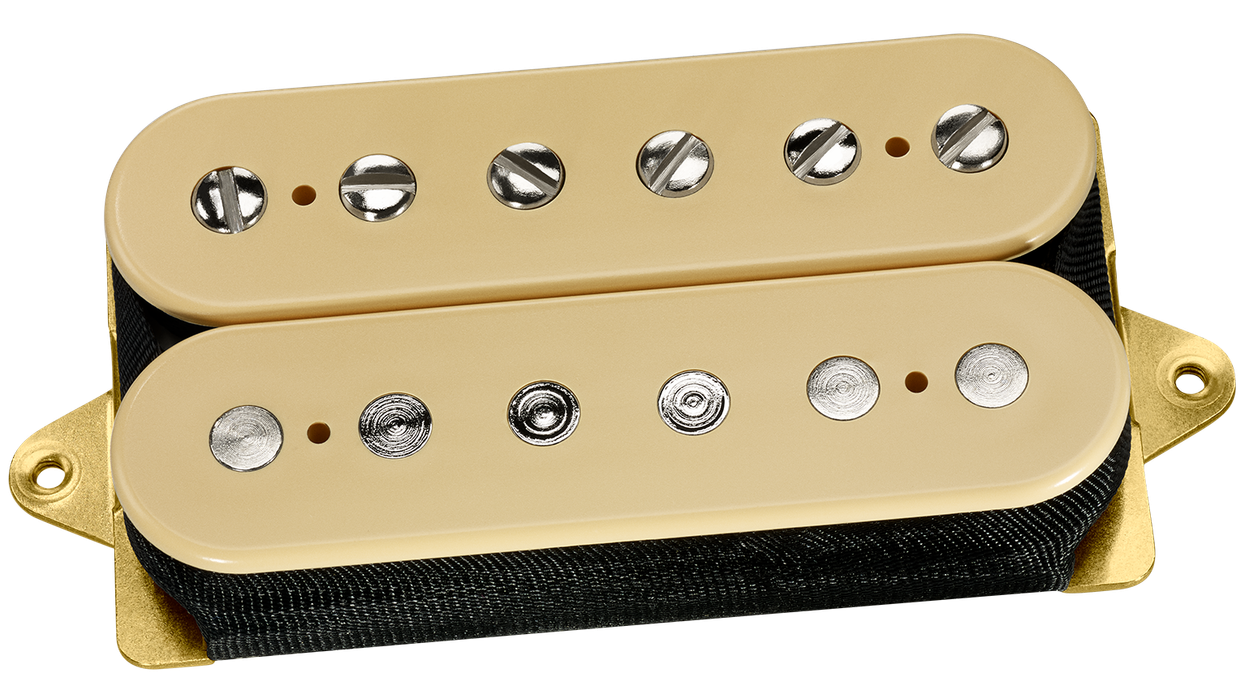
DiMarzio’s DP500CR Super PAF® Ceramic is a new version of the legendary pickup that put high-output ceramic humbuckers on the map, now available with a vintage PAF® look.
The original Super Distortion® started a sound revolution. Replacement pickups simply didn’t exist before the invention of the Super Distortion® in the early Seventies. The Super Distortion® (and its original 3-conductor version, the Dual Sound®) was the first pickup specifically designed to kick a tube amp into total overdrive, brandishing a perfect blend of power and tone: both single-notes and chords jump out of the amp and fill the room (or the track) with a wall of sound.
DiMarzio’s DP500CR Super PAF® Ceramic delivers the classic sound you’ve heard for five decades on platinum records from players as varied as Ace Frehley, Al Di Meola, Phil Collen, Tom Scholz, and Paul Gilbert. It’s also versatile: 4-conductor wiring allows instant access to Strat®-like split and series-parallel modes.
Street pricing for the DP437 Muscle T™ Bridge and DP436 Muscle T™ Neck is $89 each. The DP500CR Super PAF® Ceramic carries a $99 street price. Each pickup is individually hand-wound and tested in DiMarzio’s New York City factory. For more information visit dimarzio.com.
James Blunt savages Noel Gallagher as a “sad human” for saying unkind things about him behind his back

When James Blunt released his mainstream hit You’re Beautiful back in 2005, we’re sure he didn’t think it would earn him the title of “the most hated man in pop”. Nowadays, Mr. Blunt has become the industry’s unofficial punching bag, with artists like Oasis‘s Noel Gallagher even firing criticism his way.
Back in 2013, the Gallagher brother told Time Out Dubai that he sold his Ibiza villa to avoid being neighbours with the soft rock singer. He explained that Blunt didn’t necessarily do anything to “wind him up”, but “he just moved there… and I can’t have that.”
However, Blunt isn’t one to take negative comments lying down. In an episode of the High Performance podcast in October, Blunt fires back at the Oasis man, calling him a “sad human being”.
“[Noel was] saying he can’t live in Ibiza because I live down the road,” he said. “Well, what a sad human being he is – because it’s a big enough island, you know? I’m not asking [him] to come and see me!”
Amid the comments, Blunt implied that Noel was being two-faced. “Noel Gallagher’s never said anything unkind to my face,” Blunt explained. “He just always does it to your back when he’s trying to flog music.”
He even managed to sneak in his own jab at Noel: “Weirdly, house prices went through the roof the moment he left! I don’t know whether the house prices went up because he’d left or because I’d arrived… But there’s gotta be some connection.”
While Noel has been making headlines recently in light of the Oasis reunion, Blunt has generated plenty of headlines about the guitarists’ two-faced behaviour over the years. On a 2023 episode of podcast Where There’s A Will There’s A Wake, he also explained: “I do actually bump into Noel at various places… to your face he’s a coward. [But in the papers] he said he couldn’t have me writing my shitty songs just down the road from him.”
Other musicians have also been quick to fire criticism in Blunt’s direction over the years. Elsewhere in his chat with High Performance, the singer even recalled being snubbed by Blur and Gorillaz star Damon Albarn during the Jools Holland Show.
“At the end of the show, they take a picture of all the musicians, and Damon Albarn refused to be in that photo because I was on the episode with him,’ Blunt said.
When asked if Albarn had said that directly to Blunt, the singer explained: “No, his management went and spoke to the producers of the show, and he’s a big deal, so they went along with that… which is bizarre, because they should’ve just told him not to be such a prick.”
“So I was then held back in my dressing room while all the musicians were lined up around Jools Holland for the photo with Damon,” he continued. “Then he was led out to his car and off he went home. I was brought out for the second photo, and only one of those makes the Wall of Fame… but it’s very petty stuff.”
When considering why musicians feel so comfortable criticising him, Blunt seems to be quite understanding. “It’s very easy… to fall for the trap when we’re trying to flog our own music, when someone says, ‘Which album don’t you like?’ or ‘Which musician don’t you like?’,” he explained. “We just fall for that.”
“It’s too easy for us to start saying, ‘I don’t like this person, I don’t like that person’ and we say whoever’s the easiest whipping boy or girl at the time… and I happen to be that person.”
The post James Blunt savages Noel Gallagher as a “sad human” for saying unkind things about him behind his back appeared first on Guitar.com | All Things Guitar.
“That might be stupid coming from the son of Eddie Van Halen”: The surprising opinion Wolfgang Van Halen holds about guitar solos

While some rockers opt to show off their chops through excessive guitar solos, Wolfgang Van Halen is with many who believe they’re not always a necessary ingredient when crafting killer track.
Despite Wolfgang’s father, Eddie Van Halen, being renowned as a solo master, Mammoth’s upcoming record, The End, features a few tracks without solos. “Whenever there is a song that doesn’t have a guitar solo people are like ‘Dude? What?’,” he tells SiriusXM. “[But] it’s more about the song and how it is crafted altogether. Not everything needs a guitar solo.”
Rather than compromising on his vision to force in a meaty, shred-heavy solo, Wolfgang is more satisfied when a track feels correct. He labels himself as a songwriter first and foremost. “The ‘songwriter’ leads more than anything,” he notes. “I think that what makes me happy. What brings me purpose with Mammoth is writing the songs.”
He’s aware some people might find his stance surprising. “That might be stupid coming from the son of Eddie Van Halen to say,” he notes. “But, for me, I get [the] most joy from crafting the song, piece by piece.”
Of course, that’s not to say Wolfgang’s forthcoming third release is totally solo-free. “There are definitely more guitar solos,” he confirms. “But, again, that is not what it is about for me. But [they are] there, and I am going to give my A-game!”
Wolfgang’s band, Mammoth (formerly known as Mammoth WVH), recently dropped the first taste of The End. The Spell highlights the Wolfgang’s multi-instrumental talents – and it’s one of the new tracks that does feature a guitar solo.
While some may raise an eyebrow upon hearing Wolfgang’s views on soloing, Wolfgang is actually following in his father’s footsteps. His father voiced similar views in his later years, telling Guitar Player’s Jas Obrecht that he was well beyond his years of shredding in 1991.
“A lot of people just do all kinds of crazy shit,” he said. “Sure, that’s fine and dandy when you’re young… playing as fast as you can doesn’t really hold much water for me… To me, a solo is to highlight song. It’s not to show off.”
“What’s important to me now isn’t how fast I can solo,” he continued. “It’s the whole picture… the whole band thing, the songs… that’s what’s important.”“
The End will be released on 24 October.
The post “That might be stupid coming from the son of Eddie Van Halen”: The surprising opinion Wolfgang Van Halen holds about guitar solos appeared first on Guitar.com | All Things Guitar.
MXR Bass Synth Review
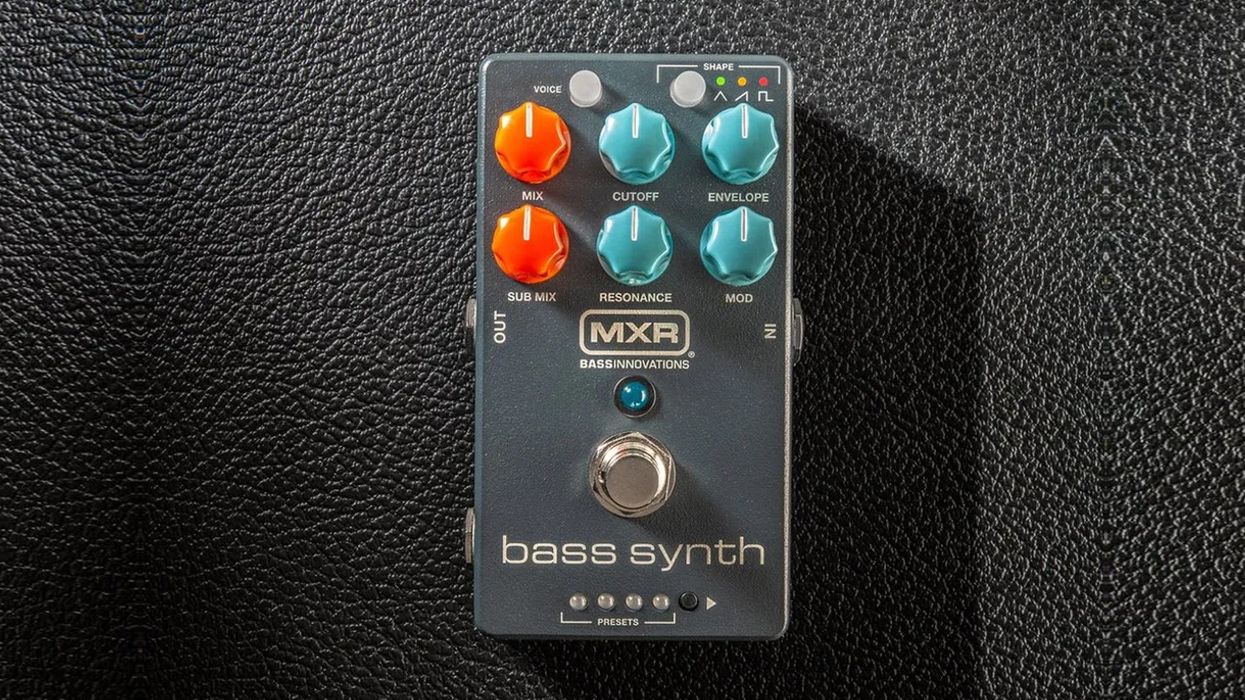
Synth-bass pedals have been around for a long time. They’ve come in a wide variety of flavors and achieved various degrees of success as far as tones and designs go. But, in my experience, they are a class of pedals that are tough to get right. Tracking and latency are always challenges. And they don’t always do a great job of approximating vintage synth-bass patches from classic recordings—specializing in sounds better suited for a sci-fi movie or avant/experimental projects than a Stevie Wonder or Michael Jackson context. MXR’s new Bass Synth, however, delivers where so many other bass synths fall short.
Source Material
In developing the Bass Synth, MXR called on Ian Martin Allison for an artist’s perspective. Allison is a Minneapolis-based bass player with a prominent session resume, a regular on the very popular Scott’s Bass Lessons, and maintains a steady gig with singer-songwriter Eric Hutchinson. He also maintains his own strong online following by creating and sharing synth-bass-style tones made with traditional pedal combinations and his programmable multi-effects unit. Allison’s faithful reproductions of classic synth sounds created with electric bass made him the ideal sounding board for the MXR team.
Can’t Judge a Book by Looking at the Cover
At a glance, the MXR Bass Synth looks pretty conventional. There are just six rotary controls and a few buttons. But looks, in this case, are deceiving. The MXR is feature-packed, and I couldn’t possibly cover all of them here. But the in-depth, 30-minute video instruction manual Jim Dunlop put up on YouTube hints at the expansiveness of its potential.
For the convenience-minded player—or synth beginner—the heart, soul, and saving grace of this pedal might be the presets. Many bass players have limited experience with the process of real creative synthesis via waveforms and filters, and MXR’s factory presets help fast-track the leap to bass-synth sound design. There are many useful departure points and they make the pedal instantly usable. Allison had a hand in developing the presets, and most are easy to incorporate into your playing style. They include sounds inspired by Michael Jackson’s “Thriller,” Stevie Wonder’s TONTO synth, the Minimoog sound on Funkadelic’s “Flashlight,” as well as modern patches inspired by specific songs and artists as diverse as Björk, Nine Inch Nails, and Deadmau5—and that’s a short list of what’s here. There are user-programmable presets, too, of course, and expression-pedal compatibility enables filter sweeping and other effects.
Like an Old, Funky Friend
The first thing I did when I plugged the Bass Synth in was engage the preset for “Thriller.” I tweaked the sub-mix control ever so slightly to add a little more bottom to the sound and was knocked out by the accuracy of the tracking. Even when I added lots of vibrato and dramatic slides—moves that would confound a lesser bass synth—the sound was punchy and clear, and with a tweak of the mix control I could let just a tiny amount of the original tone of my bass in to lend extra clarity. Best of all, though, I did not have to alter my playing to make these sounds work. The Bass Synth is both familiar and forgiving.
To get a handle on the breadth of the possible synth textures, check out the sound clip for the edgy “Flashlight” Minimoog-style patch (clip 2). This patch is an assault on the senses—intense, aggressive and conducive to overflowing sustain. This patch takes up space in the best way and makes me play much more economically, which is always a wonderful feeling. I was most excited about the “moneymaker” patch, though, which takes a cue from the Herbie Hancock classic, “Chameleon.” With its quick filter sweep and short, funky attack, it lends itself beautifully to staccato-style playing, and mixed in with a bit of my bass’ original sound, it’s a great alternative to an envelope filter.
The Verdict
Gamechanger. It’s an overused word, but MXR earns the title here. This unit gets us closer than ever to not needing to bring a keyboard to the gig. It is usable right out of the box yet contains endless opportunities for deep dives and creativity way beyond what the relative simplicity of the pedal suggests. Whether you have no experience with synth bass or you are a daily key bass player, you should get this pedal. The Bass Synth might not be for every bassist, but if you’re expected to cover a lot of tonal ground or are just a restless bass explorer, it is potentially a staple with a strong chance of staying on your board forever.
“Championing the artists who are redefining the role of guitar in music and culture”: Fender Next previously touted Wet Leg, Phoebe Bridgers and IDLES as ‘Ones to Watch’ – find out which artists were handpicked for its class of 2025
When tapping's not shredding: how to play tapped harmonics like Eddie Van Halen
“Every other Strat I picked up at the time didn’t have the same feeling to me”: Warren Haynes on why the theft of a Custom Shop Strat convinced him to change to Gibson Les Pauls
Great Acoustics: Barney Kessel’s Well-Worn 1931 Gibson L-5 Helped Score Hits by Ella Fitzgerald, Elvis, and Others
Fender Play review: sleek learning platform is better than ever in 2025

Fender Play! You’ve likely heard of it – it’s one of the most popular learning platforms out there. It was launched in 2017, but thanks to some savvy promotions by Fender it hit the big times across the pandemic. As people collectively realised that 2020 might be the time to dust off that charity-shop guitar and learn some Nirvana songs, Fender offered three months of free lessons via the platform.
The strategy was astute – it drove a huge spike in the size of Fender Play’s userbase, quickly making it one of the most talked-about learning platforms out there. But what is Fender Play like in the post-lockdown world of 2025? Has time been kind to the platform? Is it still a good option for a beginner player? What about someone with a little more experience? I spent several weeks with Fender Play to find out.
Getting started with Fender Play
Fender Play offers a mobile app alongside the browser-based platform. UI-wise, it’s all a pretty unified experience, but for my testing I stick mostly to the browser experience – mainly for screen size reasons. But hey, it’s good to see the flexibility on offer in both directions – apps that offer no desktop version can be just as frustrating as those that are desktop-exclusive.
When I first sign up, I’m given the classic questionnaire – what kind of instrument do I have, what genre am I interested in learning (a choice between rock, pop, blues, country, folk and R&B/soul), and how good am I already. When it comes to my skill level, I do tell Fender Play that I’m able to play across the fretboard (thank you, thank you), but despite this I’m placed at the very start of the Rock Path, and given lessons on how to tune and pluck strings. This makes me think that at least some of the initial questionnaire is not for my sake, but is instead (shock horror) market research.
In any case, I can easily pick a more advanced course – but this is a good opportunity to see what the average beginner will be faced with when they sign up. These early lessons are particularly crucial to the value of a learning tool, as they’re laying down the foundations on which you will build everything else.
Down the path

The bulk of the lessons are housed in Paths, the main superstructures of Fender Play’s library. Each Path consists of different levels (except the ‘essentials’ Path, which is just one level), and each level consists of different courses, and each course consists of different activities. A course will teach either a specific technique, or apply what you’ve learnt so far to a song, and an activity will either be a video lesson or a dynamic tab to hone your skills.
The Path you’re on varies by instrument – acoustic, electric, bass or ukulele, as well as genre. You can change your Path at any time, and select any lesson at any level – although to keep you chugging along a single Path, Fender Play will track your progress and let you easily choose your next lesson when you log in.
What’s immediately clear is that Fender Play’s roster of video presenters is one of its strongest points. For the earlier lessons, the basics are explained patiently and clearly, and the teachers strike a good balance between being comprehensive without overwhelming you with terminology. There’s a lot of presenters, and they’re all skilled players and good instructors.
The tone of the videos is also nice and encouraging, for the most part. Presenters generally seem keen and approachable, without any exhausting and cringey over-enthusiasm – good for diving into an extended learning session without going insane. Things can swing a little too hard in the other direction, though, as every once in a while a presenter will deliver a lesson with the sort of subdued corporate dryness that says “I am just trying to get through what it says on the autocue” more than it does “hey, let’s learn the guitar”. But this is luckily pretty rare, and not too shocking given Fender’s overall video playbook – you rarely see much joking about in its product demos.
Fender Play is also good at establishing a tight loop of ‘learn, play, then reinforce’. While some guitar learning platforms can feel like the sort of video game that only lets you actually play it in 10 minute segments between 45 minute cutscenes (enjoying Death Stranding 2?), Fender Play is instead keen to keep you active and playing along to the teacher as much as possible.
The bulk of the video lessons are followed by smart tab exercises that you can do at your own pace to cement what you’ve learnt. There is also a feedback mode, which works similarly but lets you record your playing for analysis. Whilst the insight gained from automated analysis like this is always going to be limited, I find the idea of playing and then analysing pretty handy. Apps that offer Guitar Hero-style real-time feedback can lead you to concentrate a bit too hard on the app itself while you play – here, you are given the space to do the best performance you can, and then find where you can improve.
Theory will only take you so far

What is also very good to see is the focus on theory essentials as well as guitar essentials, particularly in the early stages. Time signatures and rhythm subdivisions are explained early on, and as mentioned the tabs include traditional rhythm notation as well as a metronome.
While the efficacy of modern, alternative approaches (Yousician’s bouncing ball and so on) is, er, debatable, a mix of traditional rhythm notation and guitar tab is generally agreed to be the best compromise between keeping things legible from a guitar perspective, while remaining musically unambiguous.
And regardless of whether or not those alternative approaches work, what’s true is this: if you stick with the guitar and start playing in bands with other people, tabs and traditional rhythm notation are both going to be understood pretty generally. But if you join a band and need to have your parts notated exclusively in ‘Yousician Bouncing Ball’ format, you might be in trouble.
Simple, but accurate

Given its beginner focus, Fender Play features a good deal of songs that have been simplified for the earlier stages of the Paths. When this has happened, the instructor tells you that the arrangement has been changed, and there’s often a good balance between keeping things recognisable while still communicating the relevant ideas. Simplified riffs are used to draw outlines of concepts, before Fender Play gives you the chance to add detail and colour as you progress throughout the courses.
Take John Lee Hooker’s Boom Boom, which appears very early in the Blues Path – it’s literally the first thing you learn after learning how to fret notes. The version taught gets you playing the second (simpler) part of the song’s call and response, using it to establish how you go about playing a sequence of notes in time, within the framework of a bar of 4/4. And, thanks to the rhythmic tabs ever-present below the video lessons, you’re immediately exposed to how to read quarter notes and rests.
This approach is, I think, a good one – all learning platforms understand that most people pick up the guitar in order to actually play songs, and the sooner that happens the better. However, there is a balance you need to maintain as you do this. Calling these simplified arrangements done and dusted could be more confusing than satisfying, but luckily Fender Play’s teachers explain how a track has been adjusted for learning purposes, and the accurate notation is helpful in seeing how the more basic parts fit together.
As you progress through a Path towards the more intermediate lessons, the arrangements reflect your progress. In the case of rock, metal and other riff-driven music, the transcriptions are accurate to the real thing. In the case of tracks where the original is a more abstract pop arrangement with less of a guitar focus, there are some pretty creative fingerstyle interpretations of the tracks – it’s not always a campfire acoustic version with solely cowboy chords!
More advanced techniques
Fender Play has historically been a pretty beginner-focused platform, and it’s clear that since the lockdown-induced surge of users it’s the early phases of guitar where Fender has put the bulk of its attention. But it’s been half a decade since then – that’s five years of learning for all of those absolute beginners that signed up. So has Fender expanded the ceiling of its learning platform upwards to follow?
In short – it has. Fender Play started out as a platform for just the very basics – however now, there are a good deal of much harder riffs and techniques taught in levels six and seven of each path. The rock path, for example, will eventually have you doing things like the fiddly verse riff of Led Zeppelin’s Bring It On Home and the speedy punk strumming of Green Day.
Beyond the Paths, there are also a few lessons that absolutely transcend the intermediate label, being bonafide ‘advanced’. Not as many as there are beginner lessons, for sure, but for example the solo for Crazy Train is taught, note for note – that’s some serious shredding, and you’ll likely need a good few years of learning under your belt to tackle it. In short, the amount of teaching on offer here is far more than a year’s progress unless you’re taking ten hours of lessons a day – so even if you get an annual subscription, it’s hard to argue that you’re not getting value for money.
Paths and songs aren’t the only way that Fender Play presents its video lessons, either. There are also Skills and Collections, which drill down into specific techniques, or specific sets of songs – things like artist spotlights and collections of famous songs featuring certain techniques are organised into courses that you can progress through, outside of those more structured sections. This is cool to see, particularly as a non-beginner interacting with a platform – it’s a great jumping off point to find ways to broaden your playing horizons.
Learning a song

Fender Play certainly has an impressive song library, and this is arguably one of the platform’s biggest draws – Fender has been able to license a very wide range of music, with a catalogue that includes guitar-driven classics, modern pop, country, R&B, blues, metal and indie rock.
But while simplifying tracks to teach them to beginners is all well and good, this has a bit of a strange effect as on the rest of the experience. Like a few other learning apps, the broader song library will include lessons taken from the wider context of the more structured side of things. When browsing the song library independently of the Paths, you may encounter a track that just happens to be taught as a very early lesson – and perhaps be disappointed when you can’t actually learn the full song.
It’s not all chained to the Paths, though – there are also a few songs that exist as simpler versions within the course, but are presented as more accurate versions within the actual song library. Regardless, it’s still worth noting that just because a song is technically included in the library, it doesn’t mean you’ll be able to learn it in full.
Relatedly, it’s also not guaranteed that a song will have a ‘full’ video lesson where an instructor takes you through each part step-by-step. If you really prefer learning with that kind of granular instruction, it’s meted out a little randomly, and there’s no way to filter for songs that have it. Songs that don’t will instead either have a tabbed-out play along video, or just a dynamic tab. That’s not to say Fender Play’s library of lessons is meagre, not by any stretch – but not all of the 1,200 songs here have a ‘full’ video lesson.
I do also want to note that I run into a couple of technical issues with the ‘practice mode’ tab player every now and again. The worst of these is the occasional audio de-sync, which renders some songs totally unlearnable. This was however very rare and exclusive to the desktop interface – it only affected two tracks across my entire time with Fender Play.
Fender Play, with emphasis on the Fender
Overall my time with Fender play is all very positive. As a learning platform, it’s in excellent shape – this isn’t some lockdown hobby project Fender dumped a load of money into and then abandoned as soon as the pubs opened again, it’s a really solid educational tool that offers great quality teaching and great value for money. However, I do want to address a very Fender thing that comes from Fender Play: While the stated goal is to teach you the guitar, there is always the feeling that there’s another motivation at play here. Rather than a guitarist, Fender Play wants you to be a Fender Guitarist.
It’s undeniable that Fender is good at doing brand things, and not just because you can buy basically any piece of merch you can imagine with a Fender logo slapped onto it. Fender products often feel like they exist within an Apple-styled walled garden, into which no other guitar company may enter. This remains true here: the universe depicted in Fender Play’s video lessons is one where the Telecaster Deluxe is the only dual-humbucker single-cut ever invented, the only metal guitars are Jacksons and Charvels, and the only amps are Fender combos or EVH heads.
Lessons have a “tones” section along with tabs and other info – but rather than general advice on how to get an appropriate tone for the song, this is instead a download link for a Mustang GTX/GT preset. Admittedly handy if you do have either of these amps, and occasionally the instructor does give some more general, less Fender-specific gear advice – but for the most part, gear-focused lessons are about dialling things in on Fender gear.
None of the genuine musical teaching is undermined by this, and I’ve definitely seen more teeth-grindingly profit-driven approaches in educational apps. But it is always there, a background hum of hey, by the way, we also sell everything you can see. This is a strategy Fender has always employed: need an amp, pedal, modeller, guitar (pointy or non-pointy!), audio interface or indeed a learning platform? You can get all of these things and more if you stay within the garden. Please don’t look over the walls. There’s nothing out there!
It is obviously not some searing insight to say that Fender is going to promote its own gear within its own learning platform. But despite the crushing inevitability of businesses needing to make money, it still feels more than a little distracting the more time I spend within Fender Play. I’d rather see beginner guitarists encouraged to explore beyond the big F, as there’s a lot out there – and discovering that whole wide world is as much a part of the guitar journey as learning to play is.
Is Fender Play worth it?
Advertising whinge over, let’s examine the value for money you get with Fender Play. Its base cost is £19.49 a month, or £12.08 a month if you buy annually. This is about average for a learning platform these days – it’s on par with other video library platforms like Guitar Tricks, but it’s a little more expensive than a basic platform like Simply Guitar. The quality of the lessons and the breadth of scope on display, however, are undeniable for the beginner player. It’s a very comprehensive and detailed overview, the kind of thing that can really only be bettered by finding a one-on-one teacher, or finding a bespoke course made by a specific teacher that you resonate with.
For a more intermediate or advanced player, however, Fender Play is perhaps less easy to recommend. It’s still great if you want to go over the basics again to work on the more fundamental aspects of your playing. Don’t expect a lot of super-advanced courses that’ll turn you into some sort of shred god, but there are still a few courses that you may find useful – whether they’re worth it will depend on your approach. There is luckily the option of a free trial, and so with that in mind I would say it’s worth signing up and poking around the platform.
The post Fender Play review: sleek learning platform is better than ever in 2025 appeared first on Guitar.com | All Things Guitar.
Dawsons opens online store in Australia, serving “one of the most passionate and creative music communities in the world”

[Editor’s note: Dawsons is a brand under Vista Musical Instruments, which, along with Guitar.com, is part of the Caldecott Music Group.]
Music fans down under can now access Dawsons’ curated selection of premium, vintage and pre-loved instruments, as the music retailer unveils its brand-new Australian online store.
The new digital store offers a vast range of guitars, accessories and pedals from a diverse selection of brands. So far, the brands on offer include Heritage Guitars, MONO, TC Electronic, Behringer and more, as well as used and vintage products provided by used instrument specialist retailer, Well Played Gear.
Dawsons also plans to add more brands to the store within the coming months.
“Australia has one of the most passionate and creative music communities in the world,” David Nam Le, Managing Director at Vista Musical Instruments, explains. “We are beyond excited to join that energy and support artists at every level. Whether you’re picking up your first instrument or producing your next record, Dawsons is here to be part of your journey.”
Dawsons’ arrival in Australia comes two years after the music retailer first began to re-establish itself back in 2023. The company kicked things back off with the launch of a brick and mortar store on Denmark Street in London, which was also the birthplace of NME.
The new Denmark Street location marked the music retailer’s first new physical store in London since the brand’s foundation back in 1898.
While Dawsons hasn’t shared plans to launch a physical store in Australia, it has set up a local service location in Melbourne to help support its customers. The online store also boasts a dedicated team, if you can’t get to the Melbourne support centre. It’s the company’s way of giving that personal, expert’s touch to your shopping experience.
Right now, there’s free delivery on every order over $100. Dawsons also offers a 10% off Music Education Discount for full-time students and music educators.
Head to Dawsons Australia to find out more.
The post Dawsons opens online store in Australia, serving “one of the most passionate and creative music communities in the world” appeared first on Guitar.com | All Things Guitar.

